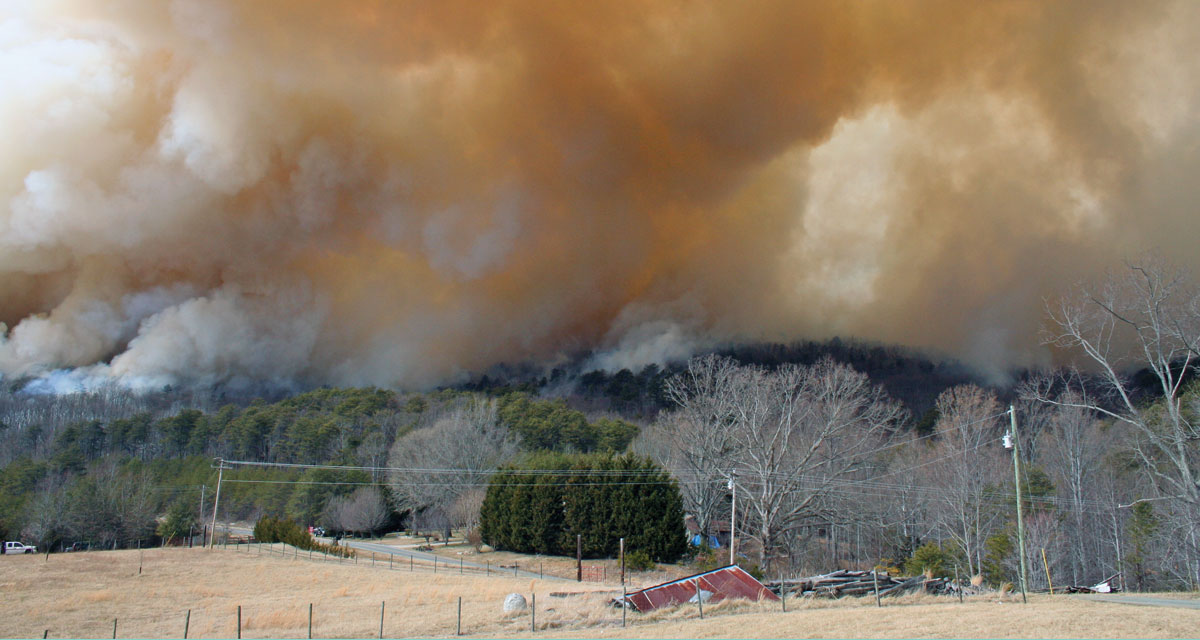In the winter months, you may notice informational signs posted along highways or country roads informing travelers of an upcoming “prescribed burn.” To the public unacquainted with the term, the image of large billowing layers of smoke and flames can escalate a feeling of anxiety and worry about safety. Television shows, movies, and the news present a clear depiction of devastation to families, homes, and towns. Everyone, including the North Carolina Forestry Service, takes wildfires seriously. They, too, have a proactive method of preventing fires, while promoting the growth of flora and the return of fauna. Through a yearlong effort of long meetings, walking, and preparing the land, the reward is for all to see in the spring, summer, and fall.
Awareness and Benefits
The goal of the Forest Service is to spread the word and encourage individuals and families to understand why prescribed burns are beneficial to the environment, especially the Piedmont woodlands.
The benefits are:
- Burning leaf litter serves to reduce the hazards of a forest fire.
- Removal of decaying or dead trees changes the condition of overcrowding, and the sun can penetrate through the forest canopy to develop the understory.
- Many of our native North Carolina plants and trees, such as the bear oak and the Table Mountain pine listed on the endangered species list, are fire-dependent. A burn fosters regeneration and growth.
- Blackberry, a thriving fruit vine, and many species of legumes regenerate and thrive after a burn.
- The habitat can return of new areas of herbaceous plants and grasses.
- The improvement of aesthetics can be fostered by removing the debris in the mid-story, which can create an appealing “park-like” appearance to the woods.
Process of Scheduling a Burn Day
“Prescribed burns” occur on a rotational calendar scheduled every three to four years. The NC Forest Service focuses on prescribed burning on private and state lands, and parks.
District Forester Mark Bost writes, “Our burning program in Surry County has increased to 10 to 15 burn units a year for almost 750 acres. Prescribed burning is a long process of planning, which involves a detailed understanding of the property. We look at the problematic areas, such as fuel areas with debris and slopes, and its terrain. Once we write a prescription based on the specific objectives, we look at logistics.” When burning in Stokes County, County Ranger Johnathan Young times prescribed burns by checking the wind speed, humidity, and atmospheric lift to provide a minimal impact on populated areas. Young also coordinates a team by determining who can fulfill specific and essential qualifications.
The Timeline is Three Hours
Preparedness is the key to a successful burn. Months prior, men and women remove flammable threats by raking or blowing excess leaves away from the fire line. Once the perimeter receives one additional treatment for final preparation, the time arrives. Typically starting at noon, fire personnel, which may include help from adjacent counties, stand ready. The burn continues until the sun begins to drop. Bulldozers with fire plows, helicopters, fire engines, and other equipment are often used to assist. Within hours, the once enflamed land emits long spirals of smoke skyward. And, for those close by to witness the after-effects, the beauty comes at night. Small flickering lights appear scattered throughout the mountain, like windows of a village alive and well.
Fire on the Mountain Event in 2020
In November of 2019, the Forestry service created its first “Fire on the Mountain” event for adults and families at Hanging Rock state park. It’s an extraordinary event for everyone! They anticipate this year’s location to be at Pilot Mountain.
Stokes County has accomplished 33 understory burns on 1,300 acres since 2016, and is proud to have won the State Foresters’ award. Landowners interested in scheduling a prescribed burn on their property should contact their local Forest Ranger or access the following link: www.ncforestservice.gov/contacts/contacts_main.htm.



















